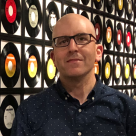

By
Kayla McLean &
Kamyar Razavi
Global News
Published March 5, 2022
8 min read

Noise pollution is an unavoidable reality for most people living in cities, and, increasingly, an issue that’s being raised by health experts and urban planners.
Moreover, urban noise is not just an annoyance. It’s a “top environmental risk,” according to a recent report by the United Nations Environment Program.
Cars and traffic are the number one source of noise pollution in cities. In Toronto, traffic accounts for about 60 per cent of the urban noise, according to Tor Oiamo, an associate professor at Ryerson University, and one of Canada’s leading noise researchers.
He says we think of it as part of daily life, but numerous studies link long-term exposure to noise with an increased risk of heart disease.
“The higher the exposure, the higher risk of having ischemic heart disease, or heart disease, which is some structural change in your heart, which leads to reduced function of the heart, which can, of course, lead to heart attacks, and potentially mortality,” Oiamo says.
Noise, Oiamo says, can simply be defined as unwanted sound. When people are exposed to loud sounds, like traffic, or construction noise, the noise causes stress and elicits a physiological response. Over time, this exposure can have lasting effects on the body.
“It’s a significant concern.”
What makes noise pollution an even more insidious threat is that it isn’t really possible to completely ‘get used to it,’ as some might assume.
Hearing, “didn’t evolve to be able to shut off just because it’s something that we want to ignore,” Oiamo says.
“You can’t turn your ears off,” he says. “Your body’s still listening. You’re still hearing these things, and it’s still activating our nervous system, potentially while we’re sleeping.”
Cities, Oiamo says, continue to be built around the automobile, which creates air pollution but, also, noise pollution – which, he says, is also a significant health threat.
“We’re so dependent on automobiles that I think people have just come to accept that this is part of our world now, and at the same time, learned how to ignore it to the best of their abilities,” says Oiamo.
“But you can really only ignore (noise pollution) for so long.”
Oiamo adds that it is possible for urban planners to design cities to be more pedestrian-focused, and less car centric. But, he says, to do that requires political will which, he adds, is often lacking.
“I don’t see a strong political will to make a difference in prioritizing or focusing specifically on reducing noise right now,” Oiamo told Global’s The New Reality.
Some cities are, however, taking the plunge, and showing what can be done – when the vision is there.
One of the best examples of a different approach to urban planning and noise mitigation – and ultimately, liveability – is happening in Barcelona, Spain.
In the 1980s, an architect named Salvador Rueda proposed sealing off several city blocks to the unimpeded flow of traffic. That thinking ran completely counter to the conventional view of widening roads to alleviate traffic congestion. Superblocks, Rueda writes, “abandon the old model of city planning, transforming the pedestrian from a mode of transportation into a citizen, and city streets from highways into public spaces.”
Like many other cities, Barcelona was built around the car – and in the 1980s, the city was choked with traffic and pollution.
The idea of limiting traffic flow was met by resistance, and it took until the early 1990s for the first superblock to be created.
The program took off when urban planners moved away from the idea that vehicular traffic is essential to city life – and began with an entirely different premise: citizens make cities, not cars.
In Barcelona, superblocks are a nine-block area, roughly 2,000 square metres, that is sealed off to all but local traffic. Pylons and other traffic management infrastructure is installed to ensure cars can only pass by, not through the blocks. Speeds are kept to 10 kilometres per hour.
Silvia Casorrán Martos is the deputy chief architect for Barcelona City Council and proponent of the superblocks initiative. There are currently six ‘superblock’ areas in Barcelona, with another four being planned, she told Global News’ The New Reality.
She says some residents and retailers objected at first to the loss of traffic through the area, worried about a potential hit on local businesses. It’s been the opposite, though: “people like to stay longer and they go shopping more,” she says.
The superblocks are now a magnet for pedestrian traffic, families, street markets and other activities, all of which add to the vibrancy of the area. “The street is there for the people.”
Casorrán Martos says Barcelona was only able to change the urban landscape because there was a clear vision of change – and, most importantly, political impetus behind that change.
“To implement all these changes, you need political will. That is very clear,” she says.
In Canada, bylaws limit when unwanted sounds, like those emanating from construction crews or a neighbour’s lawnmower, can occur and for how long.
Newer building codes can include provisions for sound walls and other noise-mitigation strategies.
But none of that is much help for Toronto resident Silken Joseph.
Her condo tower is built right next to an eight-lane expressway. The entire residential neighbourhood – including a local park – is exposed to noise. From her balcony, Joseph can hear the noise of traffic clearly – and loudly.
“I can’t escape from it,” she says. “My condo community, the entire area that I live in, just backs onto the Gardiner, so it’s literally constant noise. It’s like having a highway in your backyard.”
Joseph says it’s difficult to get a restful sleep.
“I’m very much alert, my mind is very much on, and so now I have to shut everything else out and force myself to go back to sleep, and that’s never an actual, restful sleep,” she told Global News’ The New Reality.
Making matters worse, Joseph drives a school bus for a living and spends her days surrounded by traffic and children. She then comes back home to more noise.
“It’s definitely taxing. I love what I do, but I feel like it’s literally out of the frying pan, into the oil, because I’m in one noise and into another, and I feel like I don’t get that break in between.”
Joseph is not alone in putting up with noise.
In 2017, Oiamo co-authored a report for Toronto Public Health that found nearly 90 per cent of the city’s population was exposed to noise levels above the WHO daytime guidelines.
He’s worried by the sheer number of people in big cities who are constantly exposed to such high noise levels.
Sound creates pulses of pressure that travel through the air. The intensity of those sounds is measured in decibels.
The World Health Organization’s recommended guidelines for exposure to noise during the day is 55 decibels. At night, it’s 40 decibels, a level of quiet that, Oiamo says, is virtually impossible to find anywhere in Toronto.
In general, he says, research shows an eight per cent increase in mortality from heart disease for every 10-decibel increase in excessive, prolonged noise exposure.
A large-scale study done by researchers at the University of British Columbia in 2012 used the anonymized health records of nearly half a million adults aged 45 to 85 in the Vancouver area to study the health impacts of noise. It found that an elevation in noise levels of 10 decibels was associated with a nine per cent increase in death from coronary heart disease.
A more recent Spanish study found a 3.5 per cent increase in the risk of heart attack for every one-decibel increase in excessive noise levels in people aged 65 and above.
Health experts say negative health outcomes from long-term exposure to excessive noise pollution levels can start around 50 decibels.
It’s a problem across Canada, but Oiamo, the Ryerson researcher, points out that there is also a socio-economic dimension to noise pollution. Higher-income neighbourhoods, he says, tend to be quieter, further removed from sources of traffic, while lower-income communities are often noisier – closer to airports, rail yards and industrial sites.
The COVID-19 pandemic gave Canadians a refreshing sense of what it is like to live in peace and quiet, even in the midst of a bustling metropolis like Toronto or Vancouver.
For weeks, large parts of these cities were clear of automotive traffic, which helped bring the noise levels down significantly.
“I feel like there’s more attention being paid to (noise pollution),” says Oiamo. “I think the pandemic actually made it really noticeable for a lot of people, because all of a sudden it got really quiet and people got a sense of what the city actually could sound like.”
He is optimistic that more people, including policymakers, will start to realize that cities don’t need to be noisy by nature – and that noise shouldn’t be imposed on residents as an issue that just comes with living in the city.
“I think a day will come when we decide collectively that the city can sound like life,” he says.
“It doesn’t have to just sound like cars, and industrial equipment.”
For her part, downtown dweller Silken Joseph hasn’t reached the point yet where she’s ready to move because of the noise. But she yearns for a day where she can actually hear something other than noise in her city.
“I wish I could hear silence, I wish I could just not hear anything, for a little bit, and just hear the life around me.”




Comments